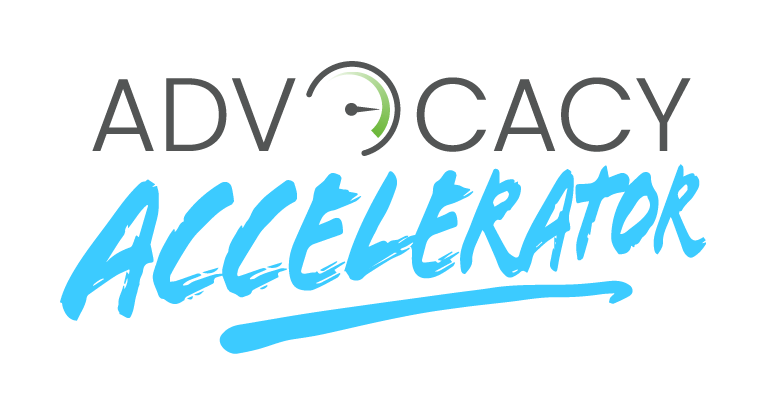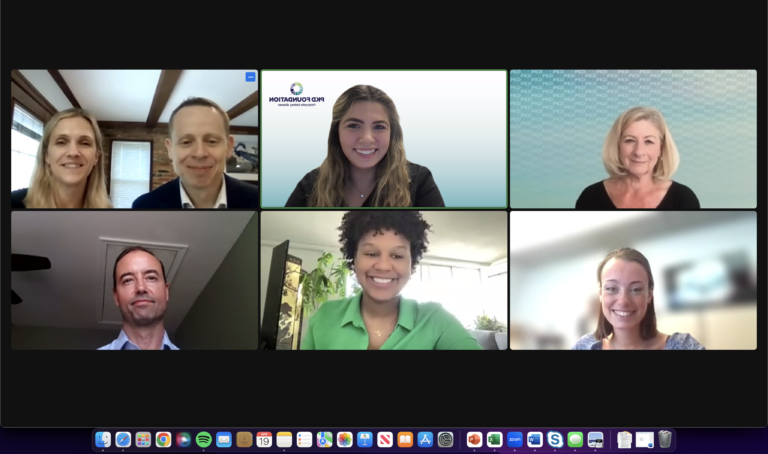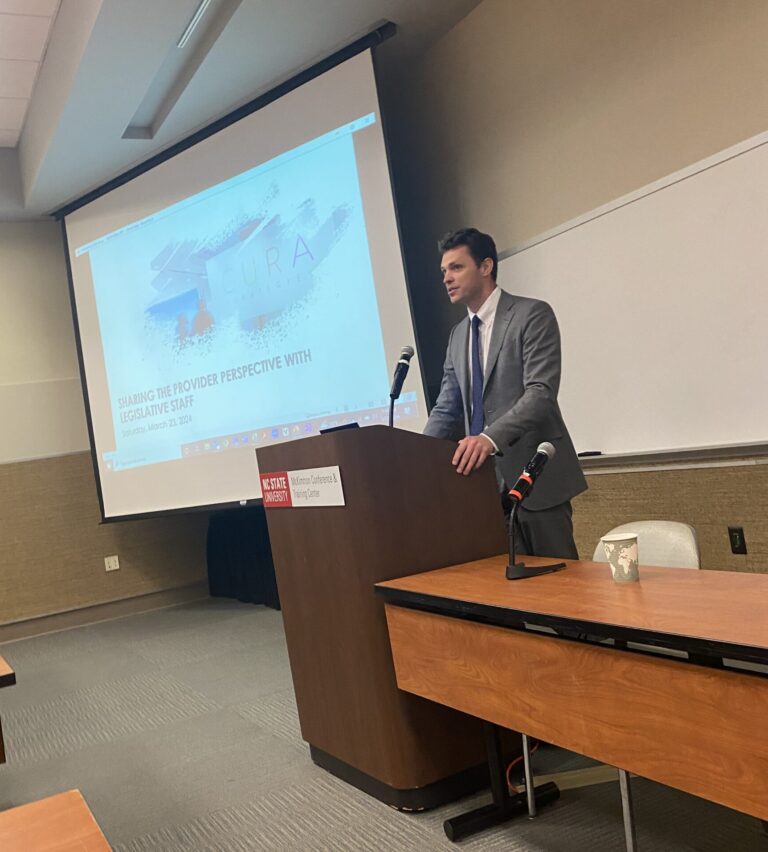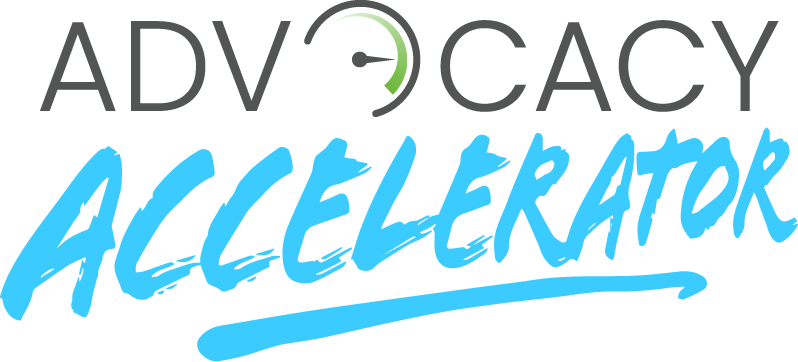Citizen Advocacy vs. Federal Lobbying: Where Do We Draw the Line?
After working with 98 health care organizations and leading countless advocacy and public relations campaigns, we frequently encounter the question: What is the difference between advocacy and lobbying?
The answer is simple: All lobbying is advocacy, but not all advocacy is lobbying.
Despite their frequent interchange in conversation, understanding the nuances between advocacy and lobbying is critical to ensure compliance with federal tax laws and appropriately and ethically direct congressional outreach. In this article, we break down the definitions of advocacy and federal lobbying and their key differences for you.1
Advocacy and Lobbying by Definition
Advocacy is action. Consider it an umbrella term that describes any activity involving educating on an issue or speaking in support of a cause, idea or initiative.
Lobbying, while a form of advocacy, specifically refers to efforts to influence public policy and legislation development. There are two types of lobbying: direct lobbying and grassroots lobbying.
- Direct lobbying is direct communication with a Member of Congress, congressional staff, legislative body, or with a government official on specific legislation to reflect the organization’s viewpoint.
- Grassroots lobbying is an attempt to influence the trajectory of legislation by encouraging citizens to contact lawmakers about a specific bill. Consider the typical “call to action” alerts which help advocates quickly email federal policymakers in support of or against specific policies and initiatives.
Want a closer look?
We cover all this and more in our Advocacy Academy online course. Watch the first lesson now for free!

What is a Lobbyist?
It’s important to recognize that although many advocates have participated in direct or grassroots lobbying, that does not necessarily require them to register as a “lobbyist.” Lobbyists meet three defining criteria:
- They are directly communicating with Congress on a piece of legislation that will benefit their employer or a client who has retained them by providing financial or other compensation.
- They interact with more than one lobbying contact (e.g., Member of Congress, congressional staffer, etc.)
- They spend at least 20% of their time working for a client or employer on lobbying activities within three months.
In 2023, organizations spent upward of four billion dollars to lobby Congress and federal agencies.2
“In 2023, organizations spent upward of four billion dollars to lobby Congress and federal agencies.”2
Key Differences Between Advocacy and Lobbying
| Advocacy | Lobbying | |
| Scope and Limits | Unlimited in Scope; Organizations (including nonprofits) can engage in as much advocacy as they’d like without penalty. | 501(c)(3) organizations, also known as charitable organizations, are restricted in how much lobbying activities they can conduct. More specifically, lobbying may not consist of a “substantial part” of a nonprofit organization’s activities or exceed a specific expenditure limit. At the federal level, this means that no more than 25% of lobbying expenses can be for any type of lobbying activities. Tracking time and limits is essential to maintaining federal compliance. |
| Reporting | No reporting necessary. | Required to complete and file lobby disclosure forms with the Clerk of the U.S. House of Representatives and the Secretary of the U.S. Senate. |
| Participants | Typically involves ordinary citizens who have a personal connection to the issue. These citizen advocates often volunteer time and effort without financial compensation. | Typically involves professional lobbyists who were once public officials, congressional staffers, or who have gained considerable experience working with members of Congress and their staff over time. These individuals are compensated or hired by an organization to promote legislative change. |
| Goals & Methods | Typically involves professional lobbyists who were once public officials, congressional staffers, or who have gained considerable experience working with members of Congress and their staff over time. These individuals are compensated or hired by an organization to promote legislative change. | Strategically aims to influence legislation and government decisions by engaging directly with lawmakers and staff. Activities include participation in congressional meetings, writing legislative letters of support or opposition, advocating for legislation to be adopted, rejected or amended, etc. |
Key Differences Between Advocacy and Lobbying
Scope and Limits
- Advocacy: Unlimited in Scope; Organizations (including nonprofits) can engage in as much advocacy as they’d like without penalty.
- Lobbying: 501(c)(3) organizations, also known as charitable organizations, are restricted in how much lobbying activities they can conduct. More specifically, lobbying may not consist of a “substantial part” of a nonprofit organization’s activities or exceed a specific expenditure limit. At the federal level, this means that no more than 25% of lobbying expenses can be for any type of lobbying activities.
Tracking time and limits is essential to maintaining federal compliance.
Reporting
- Advocacy: No reporting necessary.
- Lobbying: Required to complete and file lobby disclosure forms with the Clerk of the U.S. House of Representatives and the Secretary of the U.S. Senate.
Participants
- Advocacy: Typically involves ordinary citizens who have a personal connection to the issue. These citizen advocates often volunteer time and effort without financial compensation.
- Lobbying: Typically involves professional lobbyists who were once public officials, congressional staffers, or who have gained considerable experience working with members of Congress and their staff over time. These individuals are compensated or hired by an organization to promote legislative change.
Goals & Methods
- Advocacy: Typically involves professional lobbyists who were once public officials, congressional staffers, or who have gained considerable experience working with members of Congress and their staff over time. These individuals are compensated or hired by an organization to promote legislative change.
- Lobbying: Strategically aims to influence legislation and government decisions by engaging directly with lawmakers and staff.
Activities include participation in congressional meetings, writing legislative letters of support or opposition, advocating for legislation to be adopted, rejected or amended, etc.
The most successful health care organizations utilize both lobbying and advocacy to influence policy change. Lobbyists may be better informed about the political process but may not have a personal connection to the policy issue. Advocates usually have a compelling personal connection or experience to share. Lawmakers need both to help develop or advance legislation.
If your organization needs support developing a strategic policy plan that utilizes advocacy and/or lobbying, CURA’s team of seasoned government relations professionals is here to help! Contact us, we’d love to chat!
1 Contact legal counsel if you have specific questions about whether your organization needs lobby registration.
2 https://www.opensecrets.org/federal-lobbying/summary








